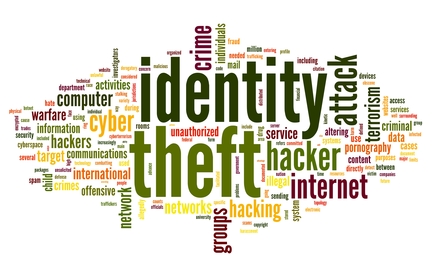Additionally, malware is available for sale, or it may leased by the day, week or month. Stolen premium credit card information is just a few clicks away, and many "reputable" black marketers back their credit card information with a 100% satisfaction guarantee. Now, that’s service!
Read on to gain an insider’s track about digital age counterfeiting schemes, hacker resources and rampant identity fraud to better protect your company’s assets.
Identity Theft, Counterfeiting and the Digital Age
It’s anyone’s guess as to how many millennia identity theft and counterfeiting have been around. In today’s digital world, however, the stakes are much higher and identity fraud affects hundreds of millions of people. To fully grasp the scope of the identity theft and counterfeiting problems in today’s digital age, consider the following network security breaches in recent months that affected domestic and international corporations, small businesses and consumers:
- In February 2015, Anthem Inc., the second largest health insurance company in America, disclosed that their computer network had been hacked. The names, birth dates, social security numbers, home addresses, employment information and income data of as many as 80 million Anthem customers had been stolen.
- In October 2014, JPMorgan Chase revealed that a network security breach compromised more 7 million small business bank accounts and more than 76 million household bank accounts.
- Even Google isn’t exempt from security breaches resulting in identity theft. In September 2014, Gmail was hacked, which resulted in 5 million stolen usernames and passwords.
- In August 2014, news outlets reported that more than 1.2 billion personal credentials had been stolen by underground Russian hackers. The breach affected personal websites, small business websites and websites of leading corporations around the world in virtually every industry.
- In April 2014, it was disclosed that a network security bug in OpenSSL called "Heartbleed" had the capability to exploit 17 percent of all Internet traffic for more than a two-year period. Hackers had carte blanche to usernames and passwords from sites like Yahoo, Gmail, Facebook, Tumblr and others.
The list goes on to include millions of compromised credentials and stolen assets from breaches at Target, Adobe, Bank of New York Share Owner Services and even the NASDAQ stock exchange.
Counterfeit Credentials and Stolen Identities for Sale
So, what are hackers doing with all of the stolen information? It's sold on the Internet's black market. The Internet is booming with more counterfeit documents than ever. Fake identities to commit face-to-face or online fraud are obtained by purchasing complete identity kits containing victims' utility bills, social security cards, drivers' licenses and passports.
In cases where victims' banking credentials, including usernames and passwords, have been stolen, and/or when credit card information has been obtained from the magnetic strips, fake credit cards and debit cards can be manufactured that appear to the naked eye and to credit card readers as authentic. This illegal scheme puts retailers on the short end of the identity fraud stick.
Additionally, counterfeit checks can be printed with verifiable bank account and routing numbers. Or, stolen credentials are used to exploit identity fraud by scammers opening new "legitimate" banking and credit card accounts.

Hacker Market Services: Support, Training and Jobs
The sophistication of counterfeiting and identity fraud rings is nothing short of astonishing. High-volume counterfeiters on the Internet's black market back their premium credit card information with 100% satisfaction guarantees.
Online training tutorials are for sale, which provide support and training for unscrupulous individuals new to the hacking, counterfeiting and identity fraud industries. Or, novices may improve their skill sets to further their illegal activities.
Hacker and counterfeiting tutorials cover everything from making fake credit cards with stolen credentials, tips for illegal online shopping to empty victims' accounts and how to do illegal bank funds transfers with a 100% success rate. If you don't want to bother with all of the work involved, hackers are available for hire, as well.
Moreover, malware may be purchased outright or leased by the day, week or month. In such manner, criminals may extend their illegal activities into Email spamming that contain undetectable malware bugs. While hackers and counterfeiters understand that obtaining sensitive financial information and personal credentials with malware is a numbers game, they also clearly understand that counterfeiting and fraud are multi-billion-dollar industries.
The irony of identity theft and the financial losses is that much of hacking is possible because corporations leave the back door open for criminals regarding network security. Stay tuned for Part II so you may learn how to protect your company's assets and your customers' trust.



